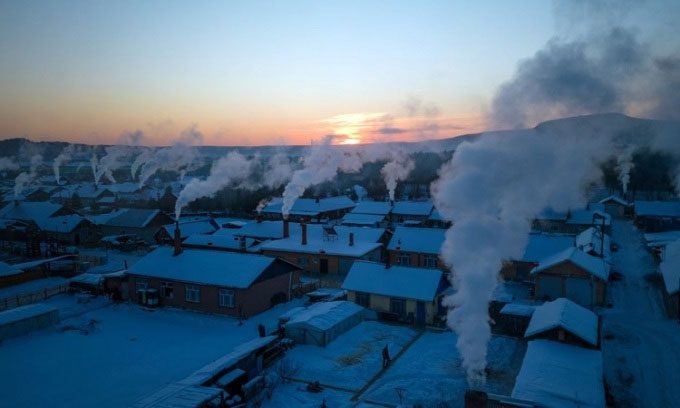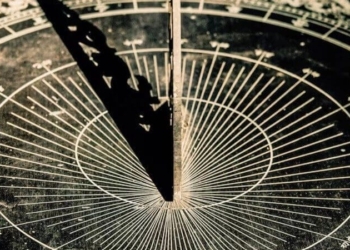Unusual Record Cold Snap in the U.S. and Asia Linked to Changes in the Polar Vortex and Jet Stream, Experts Say.
Even as the world continually breaks records for the hottest temperatures ever and edges closer to a concerning warming threshold, cold air outbreaks still arrive with bomb cyclones, bringing frigid weather and heavy snowfall, prompting many to deny the reality of climate change. However, some scientists believe that climate change and the rapidly warming Arctic could increase the likelihood of polar air moving further south, according to CNN.
This week, densely populated areas in the northeastern United States are experiencing a real-life example of how long-term warming trends can be interrupted by record cold. In January, nearly every city in the Northeast experienced the warmest January on record. It was the first month in New York City where temperatures were above average every day, marking the first time January ended without heavy snowfall in the city. However, during the week, record high temperatures gave way to record cold, with wind chill temperatures dropping to a dangerous -30 degrees Celsius on February 4.

Makhachkala recorded temperatures of -53 degrees Celsius in January 2023. (Photo: CNN).
As winter becomes milder, January brought a cold snap to many areas in Asia. Temperatures in Makhachkala, China, dropped to -53 degrees Celsius, the lowest temperature ever recorded in the country. The frigid weather and record snowfall in Japan led to at least four fatalities. Hirokazu Matsuno, Chief Cabinet Secretary of Japan, described this as a “once-in-a-decade cold snap.”
Record low temperatures were also reported in several locations in South Korea. Cold air from the far north moved directly through South Korea after passing through Russia and China, said Woo Jin-kyu, a spokesperson for the Korea Meteorological Administration, to CNN. More than 150 people died in Afghanistan as temperatures dropped to -28 degrees Celsius, marking one of the harshest winters in the country.
The coldest city in the world, Yakutsk in eastern Siberia, experienced temperatures of -62.7 degrees Celsius, the lowest in over two decades, according to meteorologists. Extreme winter weather is shifting to the U.S., with dangerous Arctic air sweeping across the southern states, affecting many regions of the country.
Winter is closely linked to the jet stream, a fast-moving air current high in the atmosphere, at cruising altitude for airplanes. As the jet stream shifts southward, Arctic cold air can reach the mid-latitudes, where the majority of the population resides in North America, Europe, and Asia. This is what occurred in Asia in January, according to Judah Cohen, a meteorologist at the Massachusetts Institute of Technology.
Another factor to consider is the polar vortex. This is a band of strong winds surrounding the cold Arctic air, located at extremely high altitudes in the stratosphere, above the jet stream and around the North Pole. The polar vortex spins like a top, according to Cohen. In a normal state, it spins very quickly, keeping the cold air near the center, similar to a figure skater spinning rapidly with their arms pulled in.
However, the polar vortex can sometimes become disrupted. When this happens, the polar vortex wobbles, stretching and deforming, causing cold air to spread out and affecting the jet stream’s path. The cold snap that hit Texas in 2021 caused widespread power outages across the state and resulted in over 240 fatalities due to one of these events.
Some scientists suggest that minor disruptions in the polar vortex could help explain the recent extreme cold snap in Asia. The hypothesis focuses on the Arctic, which is warming at a rate four times faster than the rest of the world, a result of pollution from burning fossil fuels. Researchers argue that this warming drives changes in the jet stream and the polar vortex, leading to more frequent extreme winter weather. This idea is based on research published in 2012 by Jennifer Francis, a scientist at the Woodwell Climate Research Center in Massachusetts. The study indicated that warming in the Arctic reduces the temperature gradient between the cold north and the warm south, weakening the jet stream and making it more wavy, allowing cold air to push further south.
A study by Cohen in 2021 found a clear link between Arctic warming and disruptions in the polar vortex. Cohen agrees that the rapid warming in a part of the Arctic, specifically northwest Russia, combined with increased snowfall in Siberia, amplifies the waviness of the jet stream and pushes energy higher. This causes the polar vortex to deviate, pushing cold air far away. The paper connects Arctic warming with extreme winter weather in Asia and North America, including the prolonged cold snap in Texas in 2021.
This is a very complex area of research, and other scientists are more cautious. There have been cold winters in the U.S. and Asia that coincide with mild winters in the Arctic, according to James Screen, a professor of climate science at the University of Exeter. One criticism of research linking Arctic changes to extreme winter weather is that conclusions are based on historical data. “If we look at more climate model data, we won’t see this connection, or it will be very weak,” said Dim Coumou, a climate professor at Vrije University Amsterdam. However, scientists agree that more research is needed on extreme cold snaps.





















































